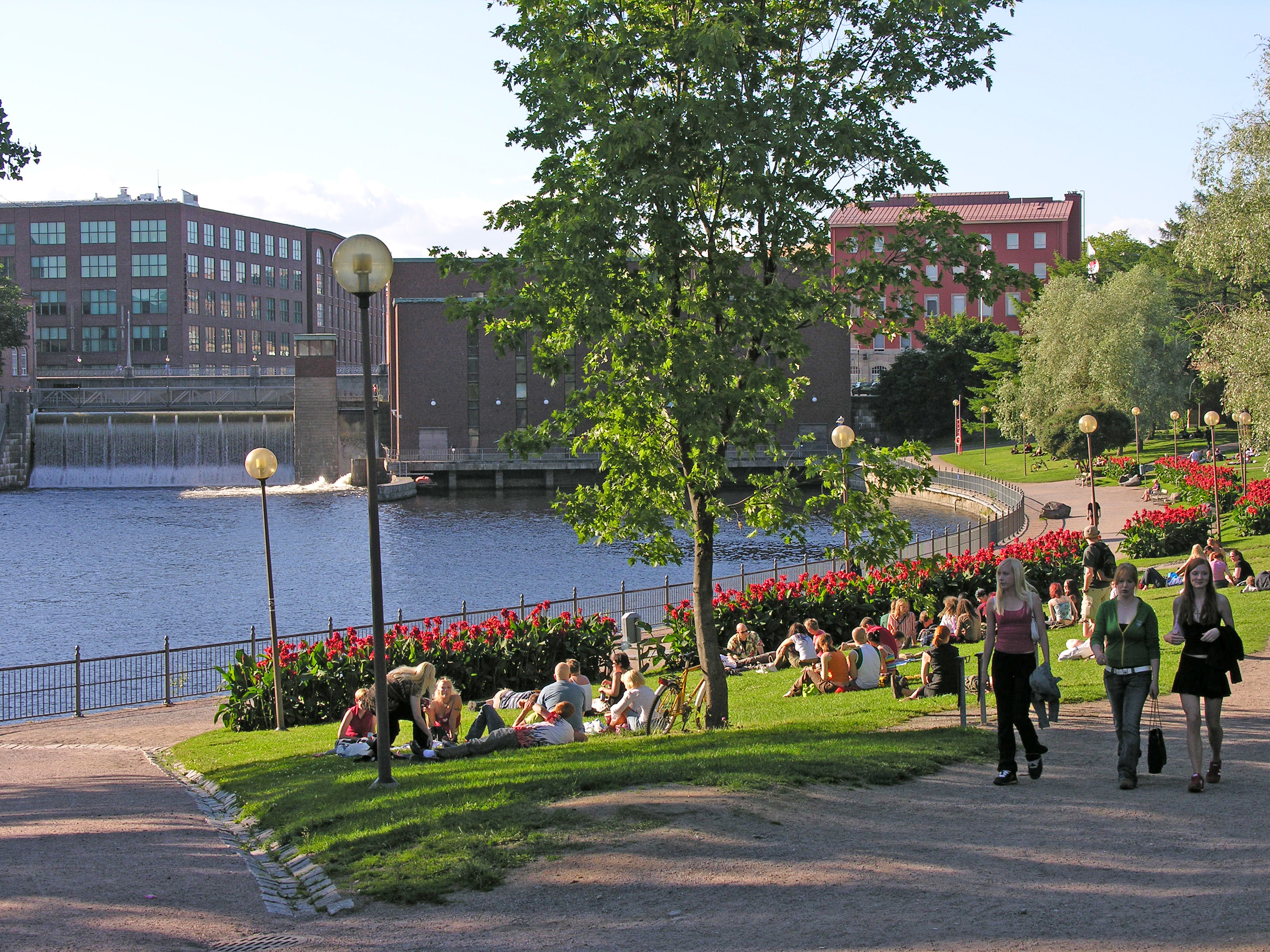Founded in 1779 by the Swedish king Gustav III, the city is littered with reminders of the country's history. Some of the most beautiful Finnish Jugend buildings represent a national cultural heritage from the time before independence was gained, whereas more modern tall buildings on the outskirts of the city centre tell the tale of urbanisation. Not to mention the massive brick Finlayson buildings along the Tammerkoski rapids providing a reminder of the city's past as a groundbreaking industrial hub.
Growing up I never paid much attention to the geographical circumstances of the city. The two lakes Näsijärvi and Pyhäjärvi joint by the Tammerkoski rapids just set the scene for my hometown, nothing more. But in fact, the rapids were strategically important for the immense growth of the city in the 19th and 20th century. It was due to them that Tampere became an important industrial city where large technically advanced factory buildings were built on the banks of the rapids.
 In the second half of the 1900s most of the big industries moved their production away from the rapids to the outskirts of the city, thus leaving the old factory buildings standing empty. During most of my childhood years I hardly gave them a second thought, although they occupied large areas and painted a rather gloomy backdrop to the city.
In the second half of the 1900s most of the big industries moved their production away from the rapids to the outskirts of the city, thus leaving the old factory buildings standing empty. During most of my childhood years I hardly gave them a second thought, although they occupied large areas and painted a rather gloomy backdrop to the city.
By the end of the 1990s the renovation of some of these old buildings began, especially in the old Finlayson factory area. Large areas were opened to the public, balancing new services and the industrial legacy that the buildings carry. Today these buildings host museums, restaurants, offices and movie theatres. Restoring and bringing the old factory buildings back onto use saw the old urban environment reborn while referencing the city' own history.